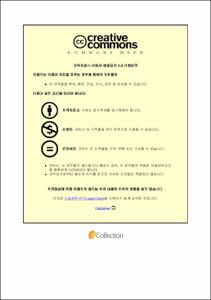Synthesis and Evaluation of PVA Based Membrane for Pervaporation Dehydration Process of Water/Organic Feed Mixture
- Abstract
- In this worked PVA based hydrophilic membranes were prepared using different methods for pervaporation dehydration of water/isopropanol, water/acetonitrile and water/acetic acid mixtures.
All the membrane were characterized by different technique such as, scanning electron microscopy, X-ray diffraction analysis, contact angle measurements, Differential scanning colorimetry, Fourier transform infrared spectroscopy and swelling degree measurements. Among them blending membrane from PVA/PVAm were used for separation of water/isopropanol mixture and acetonitrile mixtures. In pervaporation output, membrane with blending ratio (PVA: PVAm 5:1) showed optimum performance in both of water/IPA and water/Acetonitrile feed system. Further in the next study, in order to upgrade the pervaporation output for the same membrane (PVA: PVAm 5:1.5), it was further upgrade using the loading of modified silico-tungstic acid (MSTA) particle in to it. For that, the modified silicotungstic acid particle were prepared using melamine and silicotungstic acid complexation in aqueous media. In pervaporation separation water/isopropanol mixture, it was concluded that the 8 wt. % loaded MSTA loaded showed the optimum pervaporation performance. It was found that separation using the pervaporation membrane for water/isopropanol was economically inexpensive in comparison to the distillation. Since due to relative volatility of water and acetic acid mixture their separation using the distillation is economically and energetically expensive so mixed matrix membrane using the PVA and in situ synthesized Silver nano particle were prepared and pervaporation separation of water/acetic acid were successfully done.
- Issued Date
- 2019
- Awarded Date
- 2019. 2
- Type
- Dissertation
- Keyword
- pervaporation membrane polyvinyl alcohol polyvinyl amine polyacrylic acid silicotungstic acid
- Publisher
- 부경대학교
- Affiliation
- 부경대학교 대학원
- Department
- 대학원 공업화학과
- Advisor
- 손민영
- Table Of Contents
- 1. Introduction 1
1.1 Purpose of the study 3
1.1.1 Synthesis and Evaluation of PVA based membrane 3
1.1.2 Dehydration of water/organic mixtures 4
1.2 Objective of present study 17
1.3 Plan of work 17
Reference 18
2. Research Background and Literature Survey 21
2.1 Membrane separation processes 21
2.2 Pervaporation- Membrane Separation process 23
2.3 Factor affecting polymer membrane performance in pervaporation 27
2.3.1 Effect of operating condition 27
2.3.2 Effect of permeant size 30
2.3.3 Effect of membrane thickness 30
2.3.4 Membrane swelling 31
2.3.5 Membrane crystallinity 31
2.3.6 Free Volume 31
2.4 Classification of pervaporation process and materials and application 32
2.5 PVA based membrane 34
Reference 39
3. Pervaporation dehydration of isopropanol by using the blend membrane prepared from the PVA and PVAm 42
3.1 Introduction 42
3.2 Experimental 43
3.2.1 Preparation of the crosslinked PVA/PVAm blende membrane 45
3.2.2. Swelling measurement 48
3.2.3 Pervaporation apparatus and measurement 49
3.3 Result and Discussion 51
3.3.1 Membrane characterization 51
3.2.2 Pervaporation 60
3.2.2.1 Effect of PVAm Addition 60
3.2.2.2 Effect of temperature 65
3.2.2.3 Effect of feed composition 69
3.2.2.4 Effect of membrane thickness 72
3.2.2.5 Comparison of PV performance with other studies 75
3.4 Conclusion 77
Reference 78
4. Pervaporation dehydration of acetonitrile by using the blend membrane prepared from the PVA and PVAm 80
4.1 Introduction 80
4.2 Experimental 83
4.2.1 Preparation of the crosslinked PVA/PVAm blend membrane 83
4.2.2 Degree of membrane sorption in acetonitrile/water feed mixture 85
4.2.3 Pervaporation apparatus and measurements 85
4.3 Result and Discussion 87
4.3.1 Membrane Characterization 87
4.3.2 Membrane swelling and Sorption Study 87
4.4 Pervaporation 89
4.4.1 Effect of PVAm content in PVA/PVAm ratios on PV performance for water/ACN mixture 89
4.4.2 Effect of feed composition on separation performance for water/ACN mixture 94
4.4.3 Effect of feed temperature on separation performance for water/ACN mixture 99
4.4.4 Comparison of pervaporation results with other studies 105
4.5 Conclusion 107
Reference 108
5. Pervaporation dehydration of water/isopropanol mixtures using M-STA loaded PVA/PVAm mixed matrix membrane. 110
5.1 Introduction 110
5.2 Experimental 114
5.2.1 Preparation of the preparation of m-STA particle 114
5.2.2 Preparation of the M-STA loaded PVA/PVAm mixed matrix membranes 115
5.2.3 Swelling Degree Measurement 118
5.2.4 Pervaporation apparatus and measurements 118
5.3 Result and Discussion 119
5.3.1 Membrane Characterization 119
5.4 Pervaporation 129
5.4.1 Effect of M-STA Loading 129
5.4.2 Effect of feed concentration 133
5.4.3 Effect of operating temperature on the membrane performance in pervaporation 136
5.4.4 Membrane durability study 141
5.5 Conclusion 143
Reference 144
6. Pervaporation separation of a water/acetic acid mixture using in situ synthesized silver nanoparticles in PVA/PAA membrane 146
6.1 Introduction 146
6.2 Experimental 149
6.2.1 Membrane preparation 149
6.2.2 Membrane absorption Study 151
6.2.3 Swelling degree measurement 151
6.2.4 Pervaporation apparatus and measurements 151
6.3 Result and Discussion 152
6.3.1 Characterization 152
6.4 Pervaporation 164
6.4.1 Effect of Ag nanoparticles on the pervaporation performance of the PVA/PAA membrane 164
6.5 Conclusion 169
Reference 170
7. Summary and Conclusion
7.1 Summary 173
7.2 Conclusion 174
- Degree
- Doctor
- Files in This Item:
-
-
Download
 Organic Feed Mixture.pdf
기타 데이터 / 2.94 MB / Adobe PDF
Organic Feed Mixture.pdf
기타 데이터 / 2.94 MB / Adobe PDF
-
Items in Repository are protected by copyright, with all rights reserved, unless otherwise indicated.